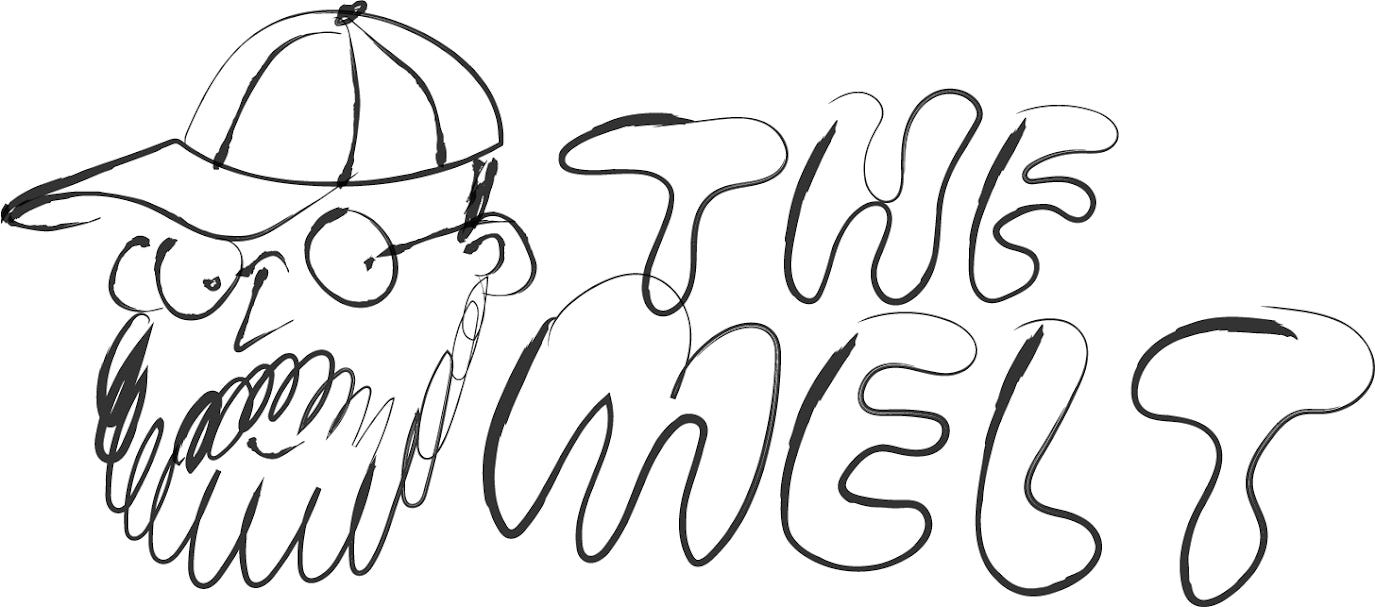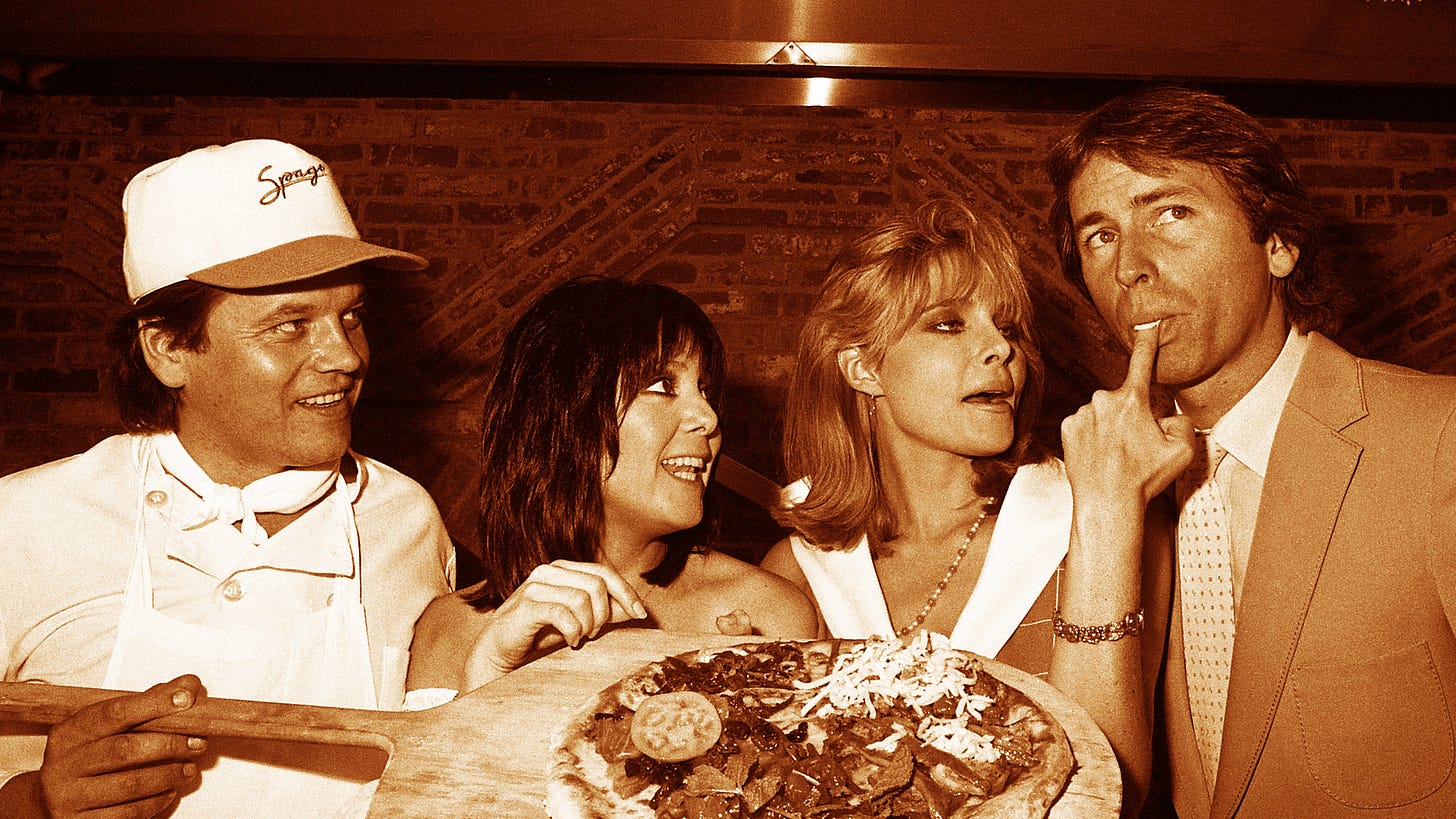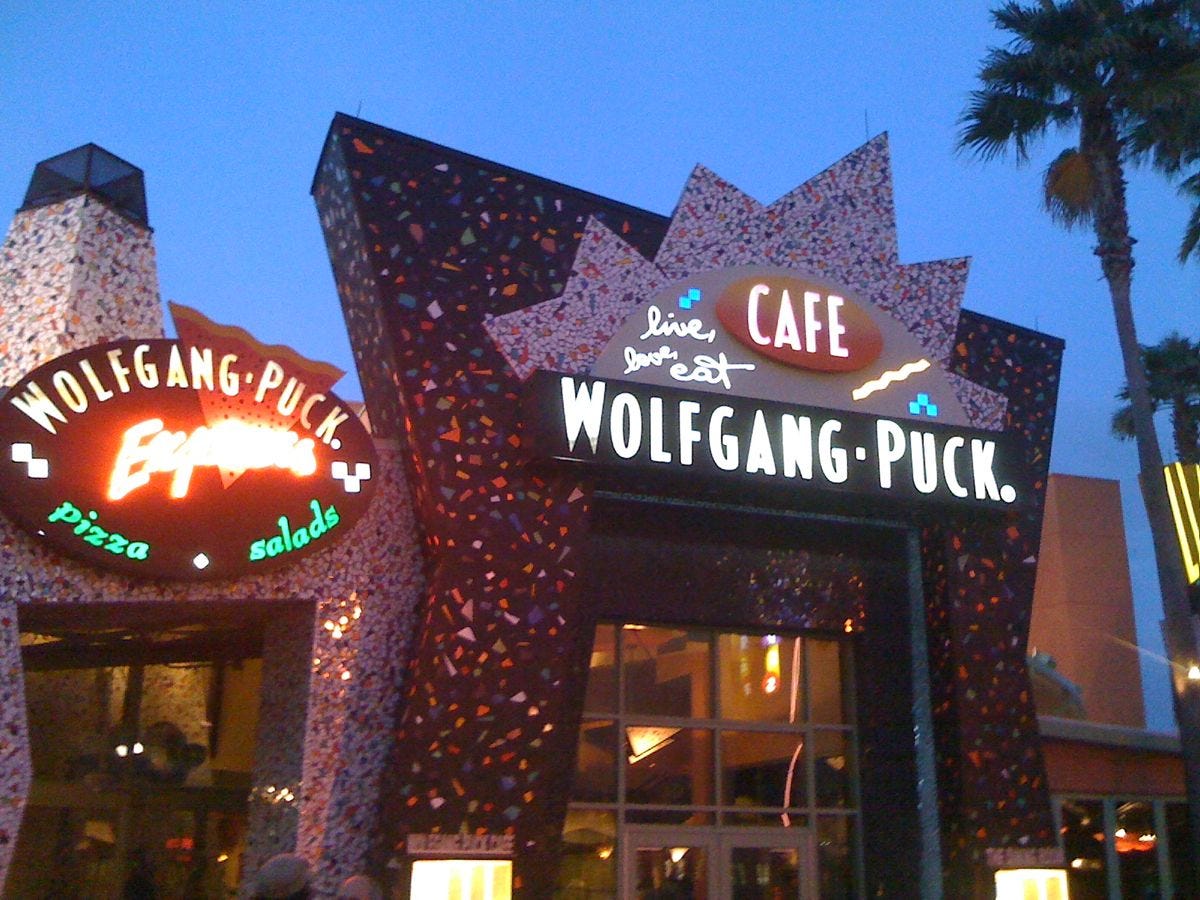Mike Pace is a genius. Seriously.
For the longest time I’d been trying to sum up this entire vibe that I couldn’t quite put my finger on. It’s movies like My Blue Heaven (a personal favorite) or pictures of Arsenio Hall walking down a street in L.A. flashing a smile in 1991. It’s driving with the top down and “Human Touch” by Bruce Springsteen comes on and you’re like “Oooooh yeah!” It’s funky fonts. It’s the closing sequence for any romantic comedy filmed between 1988-1993. It’s basically all of Pretty Woman. It’s the parents from Rugrats. It’s a very Boomer “Don’t stop thinking about tomorrow” circa 1992 vibe. It’s Wolfgang Puck smiling as he brings his famous smoked salmon pizza to a table where Whoopi Goldberg, Steve Martin and Carrie Fisher are kibitzing after attending the premier for Postcards From the Edge. Doesn’t that sound nice?
It’s Spago Rock. And Pace came up with it.
Pace and I have been friendly on Instagram for some time. I was into his band Oxford Collapse, a standout in an ocean of indie bands that came out of Brooklyn in the aughts, but think his latest project, Simmons & Matteo, sounds like nothing else out there right now. I imagine that will change given our cultural obsession with escaping to the past to get away from the present and the fixation on all things vintage. Pace takes influence from a lot of the things I mentioned above, and distills them into some of the sweetest pop sounds this side of your ‘89 Saab 900 radio dial.
But what really fascinates me is that Pace is the only musician I know exploring these specific sounds and vibes right now. There will always be people digging through old record crates and finding old soul or psych, yacht, garage or house records and using them as an influence on their project, but I really haven’t noticed anybody else out there using the sax parts from “Waiting for a Star to Fall” by Boy Meets Girl in their songs.
Whatever the case, I needed to ask Pace a little more about this. He thankfully corrected me because I’ve been wrongly telling people it’s “Spagocore” for the last few months, and also supplied me with a lookbook worth of images you can find just searching Getty for “Spago.” A small sampling of Pace’s favorites include Alice Cooper’s suit in 1986, Eddie Murphy and Sly leaving the restaurant that same year, and Maria Conchita Alonso in 1989.
So what, exactly, is Spagocore?
“Spago Rock,” as I call it, was a term I coined in the early aughts to refer to a style of music that could be loosely defined as “organic soul with synthetic instrumentation.” If the yacht rock sound encompassed the mid-’70s to early ‘80s and centered around good times n' vibes, Spago Rock takes place from roughly 1986-1992, when many legacy artists matured and mellowed into their 40s, yet still wanted to be seen as contemporary and relevant. Interestingly, it’s also the last era of mainstream pop music before hip-hop became the dominant form.
Artists who cut their teeth woodshedding in the analog days were now embracing the latest in digital studio technology, crafting immaculate electronic-based sophisti-pop while never truly abandoning their rock roots. It's a certain strand of upwardly mobile adult contemporary — these were songs for "mature" audiences but still aimed at the pop charts — pristine, crisp, very expensive productions meant for compact discs that also sounded gangbusters on FM radio (or on the five-disc changer at the bar in a Michelin two-star restaurant). It's an expansive genre ranging from mellow smooth jazzy meditations on one end to shiny, compressed danceable sophisticated synth-pop on the other. Essentially, if the artist could afford to eat at Spago in the late 80s, there's a pretty good chance they dabbled in Spago Rock.
The ur-text for Spago Rock is “Higher Love” by Steve Winwood (1986), with Go West’s “King of Wishful Thinking” (1990) as the epitome of the genre. Last year, in collaboration with clothing brand TSPTR, I put together a Spago Sampler playlist on Spotify that gives you a better idea of what I consider Spago Rock.
It's a sound, but it's also a look. How would you define the look?
I’d say it was “smart casual” for the time. Blue jeans or pleated slacks and blazers, expensive, blousy button-down shirts (for men and women); a tie if you were feeling special. The cool thing about Spago is, while it was long L.A.’s “It” restaurant, it was never stuffy in a black tie kind of way (even though it hosted tons of black-tie Oscar afterparties). It was a place where celebrities and power brokers of the day could feel comfortable and let their hair down a bit; throw a sport coat over that t-shirt and you were good to go.
Have you ever been to Spago?
Not yet, but I’m planning on it the next time I’m in Beverly Hills! Part of the appeal of Spago Rock is the nostalgia for the time in my life when these songs were part of popular culture. I was a young teenager on the east coast obsessing about music and movies, and while I’d been to California on family vacations, I hadn’t been to Hollywood or L.A. yet, and these songs were the soundtrack to the idealized vision I had of the place; where it was always sunset and you were rushing to meet your agent or manager or have a business lunch at a place like Spago.
Any thoughts on the Wolfgang Puck's at Disney World? Could that be its own look/sound?
It’s so hard to capture lightning in a bottle, but the Disney World restaurant almost has a “Next Generation” feel; it looks like a place for kids and the decor is garish and completely over the top. It seems to be lacking much of the class associated with Spago, although I can definitely hear “King of Wishful Thinking” absolutely blasting at a deafening volume from the bar.
How did Simmons & Matteo get started?
Coming from an indie rock background, I was very comfortable writing loud, guitar-driven music. After years of that I wanted to focus on writing for different voices outside my comfort zone, while also trying my hand at the more soulful pop/R&B/soft rock stuff I love. Simmons & Matteo is the name of my more “mainstream” pop-centric collaborative writing/producing project, and I chose it because I felt it was broad enough to conjure up various sounds and styles; are they '70s singer-songwriters? '80s jazz fusion cats? A '90s acid house DJ duo? (I actually saw the name on a mailbox in Bermuda).
“Missed Connection” was the first song I wrote in this vein and it’s the most overtly “Spago Rock'' of the S&M singles I’ve released so far. The aim was to create something that sounded like it would’ve been played to get the dance party started at my bar mitzvah in 1992, but might also have a home in the left field pop world of today.
Are there other bands/musicians right now you'd consider Spago? Could there be a Spago scene?
Historically, I think the issue is that the vast majority of artists who released songs I’d classify as “Spago Rock'' were dabblers; most had a handful of songs or maybe an album in this vein and afterwards their musical path took them elsewhere. Part of what’s intriguing to me about this sound is that almost all of these artists were established names by the time their Spago period rolled around. Much like the actual restaurant, you had to work hard to get in.
Having said that, I’m not aware of any contemporary artists working in the Spago milieu, at least intentionally. This is partially because no one knows what the fuck “Spago rock” is, save for a privileged few. If you consider yourself Spag’, hit me up!








